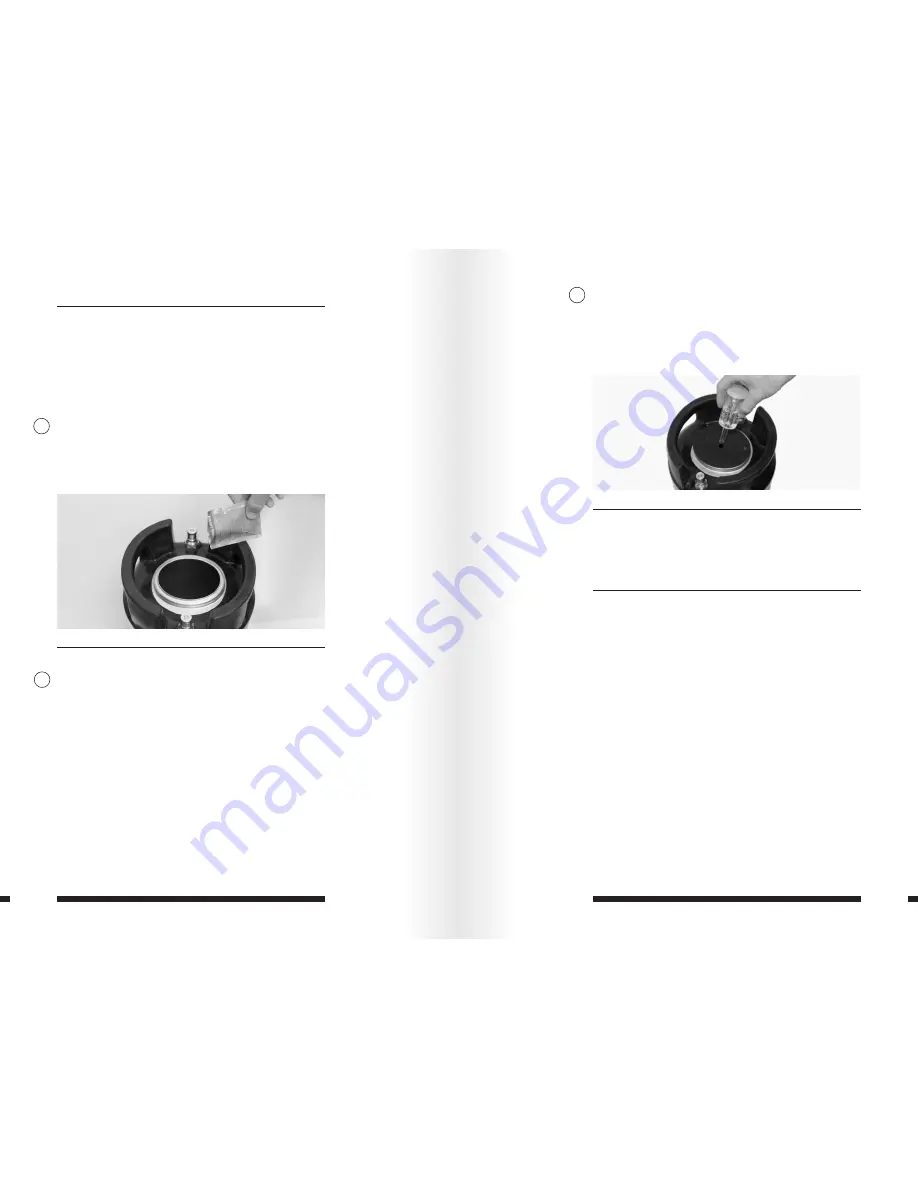
SECTION 3: BREWING ON YOUR ZYMATIC
®
- CONTINUED
36
37
3.5 Pitch Yeast
Yeast comes in either dry or liquid form. Both types of yeast
can be used to ferment your wort. If you are using liquid
yeast, be sure to take it out of refrigeration when you start
your brew to give the yeast time to warm up. Prepare yeast
following manufacturer’s instructions. Dry yeast usually does
not require any preparation, although some brewers prefer to
proof their yeast.
After your wort is chilled to pitch temperature, remove the
keg seal and pour in your yeast. Your keg may have a large
head of foam depending on the chilling method used. This is
normal; give your keg a few swirls to incorporate the yeast
fully into the wort. Replace the keg seal.
Sanitize your airlock and fill with sterile water (or liquor) to
the fill line. The airlock keeps the keg properly sealed against
any wild yeast or bacteria, while still allowing it to release CO
2
as the beer ferments.
Insert the airlock into the keg seal hole until it feels snug.
Carefully place your keg in a temperature controlled area,
such as a garage or closet or fermentation chamber such as
the KegSmarts system. Fermentation can take anywhere
from a week to several weeks depending on the brew. Make
sure to read your recipe for fermentation specifics.
Ales generally ferment at between 64°-70 °F (18°-21°C), while
lagers generally ferment between 49°-55°F (9°-13°C).
3.6 Fermentation
For best results, ensure your keg stays in a temperature
controlled area where it can sit undisturbed for a few weeks.
The exact temperature range depends on what yeast you’ve
selected, and what beer you’ve brewed.
As your beer ferments, CO
2
is released through the airlock.
During the first few days of fermentation, you will likely see
the water in your airlock bubbling. This is a sign of active
fermentation.
The bubbling will slow down or completely stop when
fermentation is nearing completion (on average, 10 days).
OPTIONAL:
If you have a hydrometer, use it to take a gravity reading after
the recommended fermentation time is over to make sure the
beer has fermented completely. Take an initial reading, then
wait two days and take another reading. If the gravity reading
has not changed, fermentation is complete. If the gravity
continues to drop, your beer is still fermenting. If your beer did
1
2
3
Содержание Zymatic
Страница 1: ...Zymatic User Manual V15 0730 ...
Страница 30: ...SECTION 6 TROUBLE SHOOTING CONTINUED 58 59 NOTES ...
Страница 31: ...SECTION 6 TROUBLE SHOOTING CONTINUED 60 61 ...
Страница 32: ...SECTION 6 TROUBLE SHOOTING CONTINUED 62 63 ...
Страница 33: ......















































